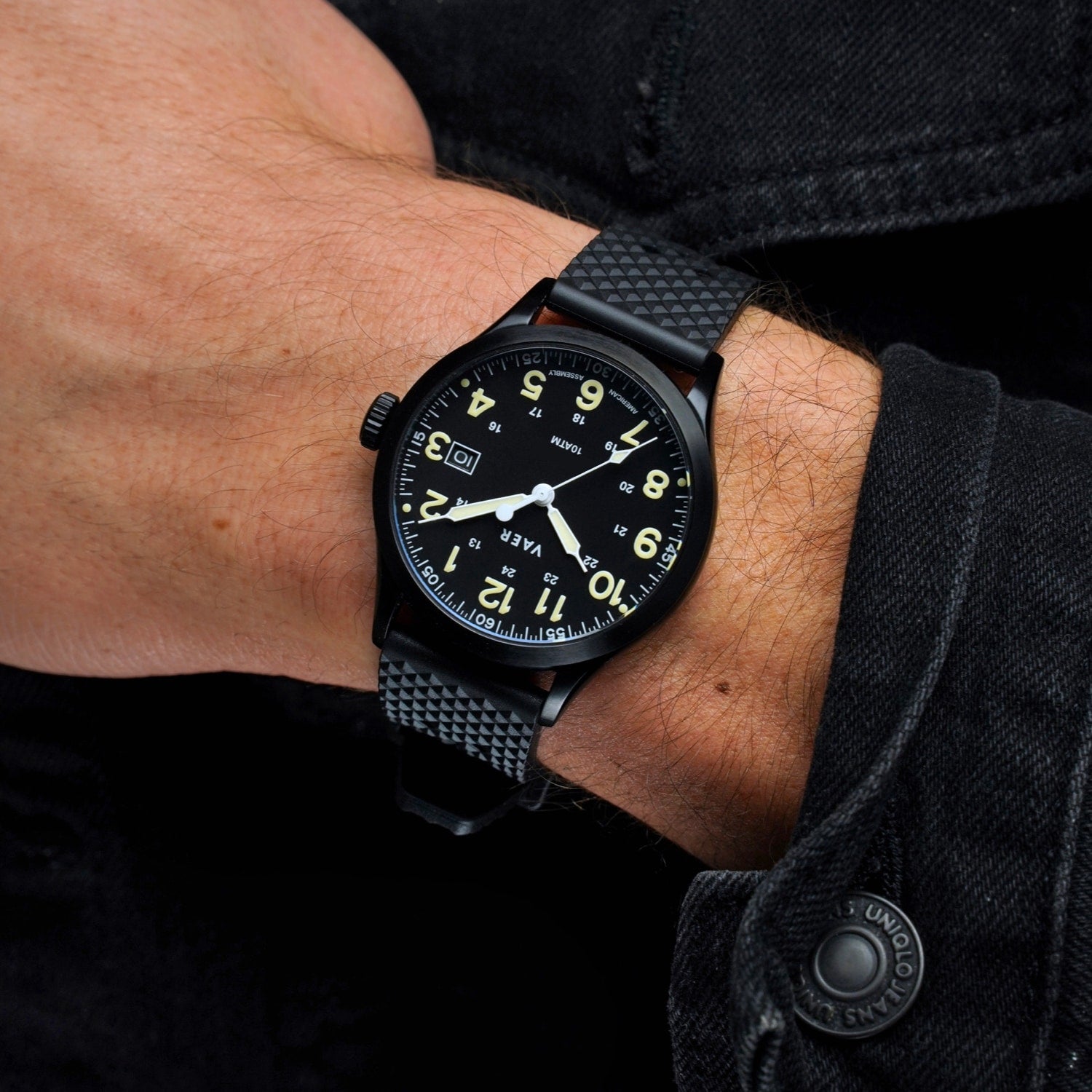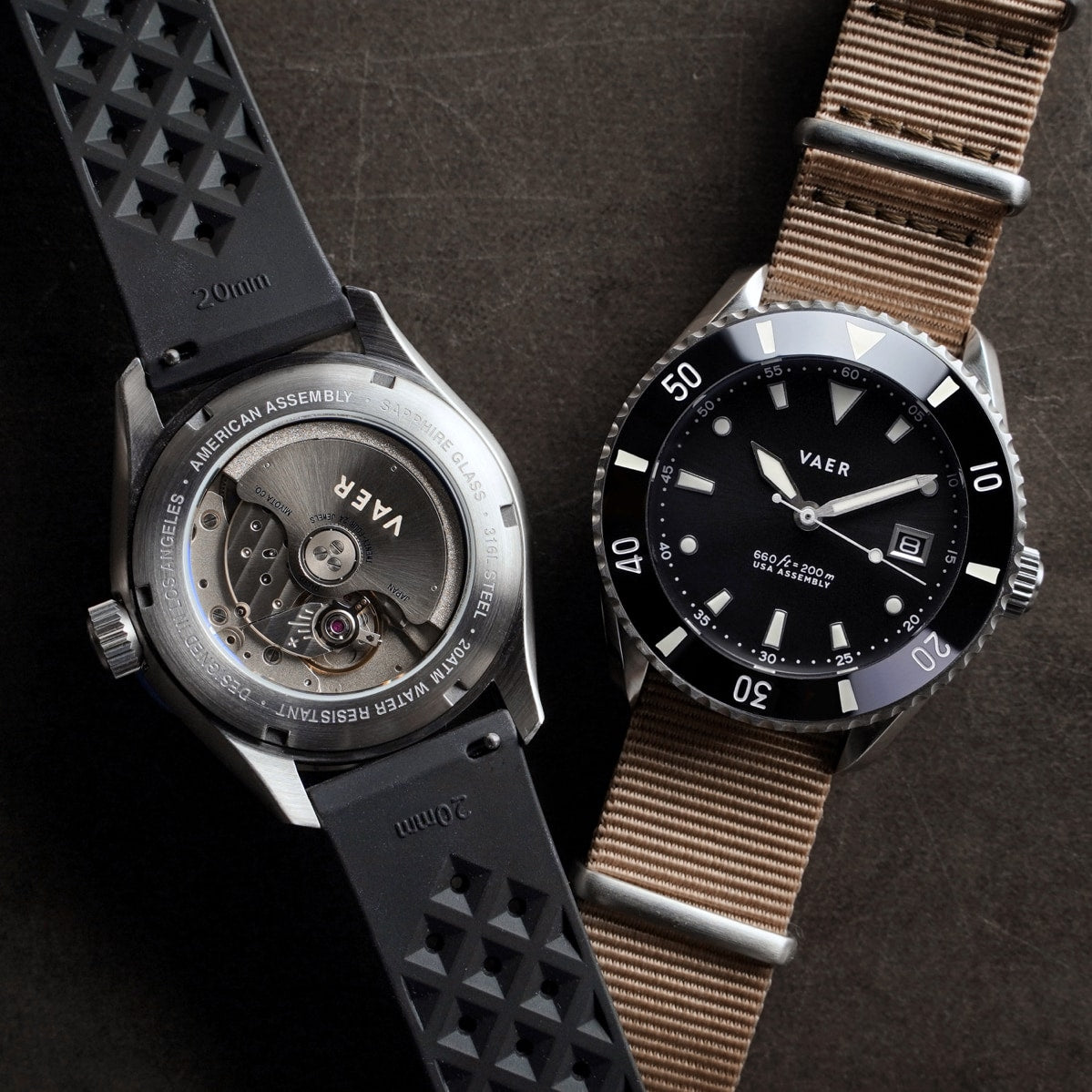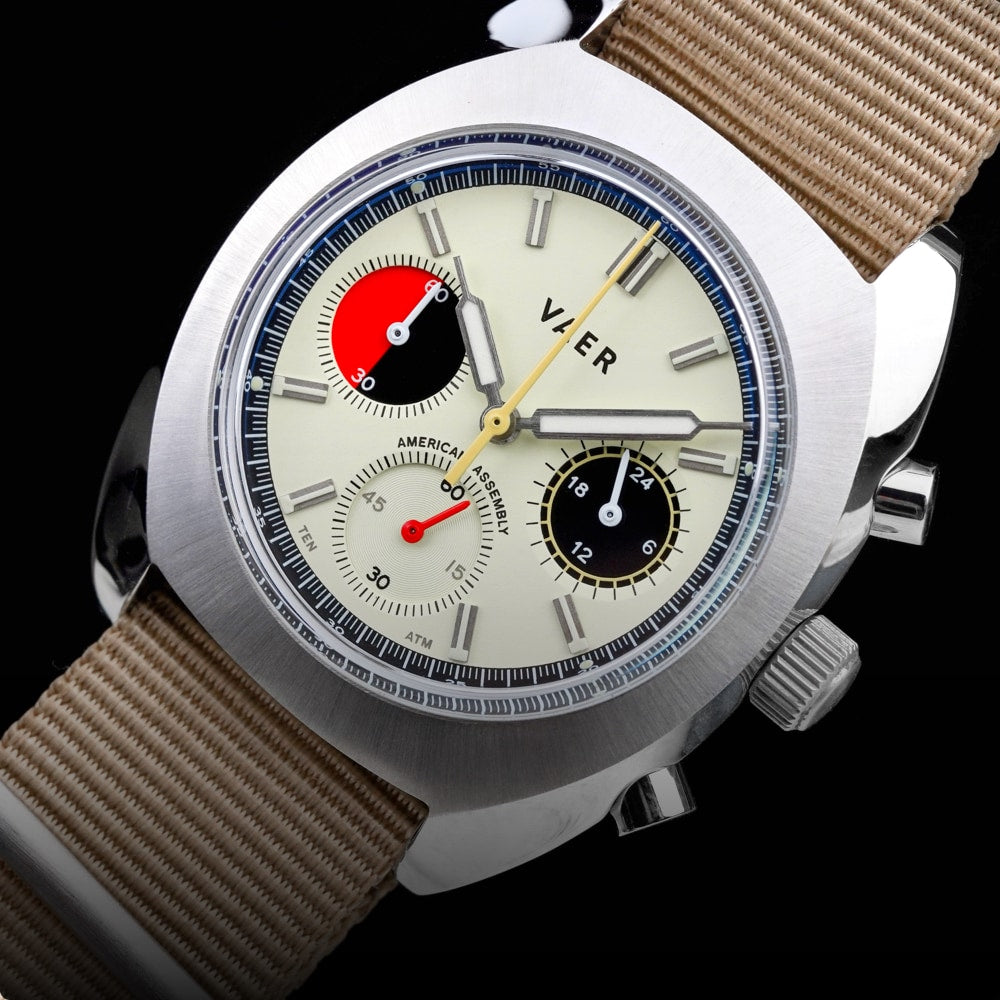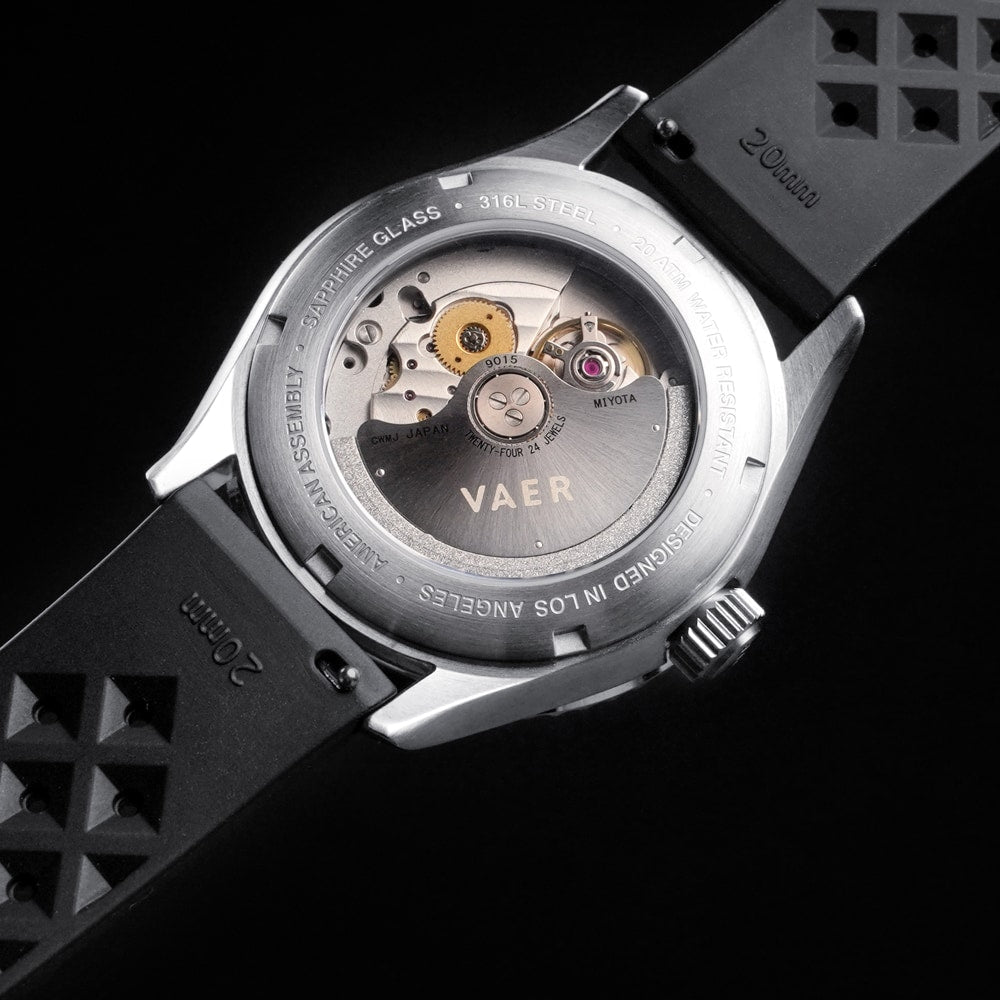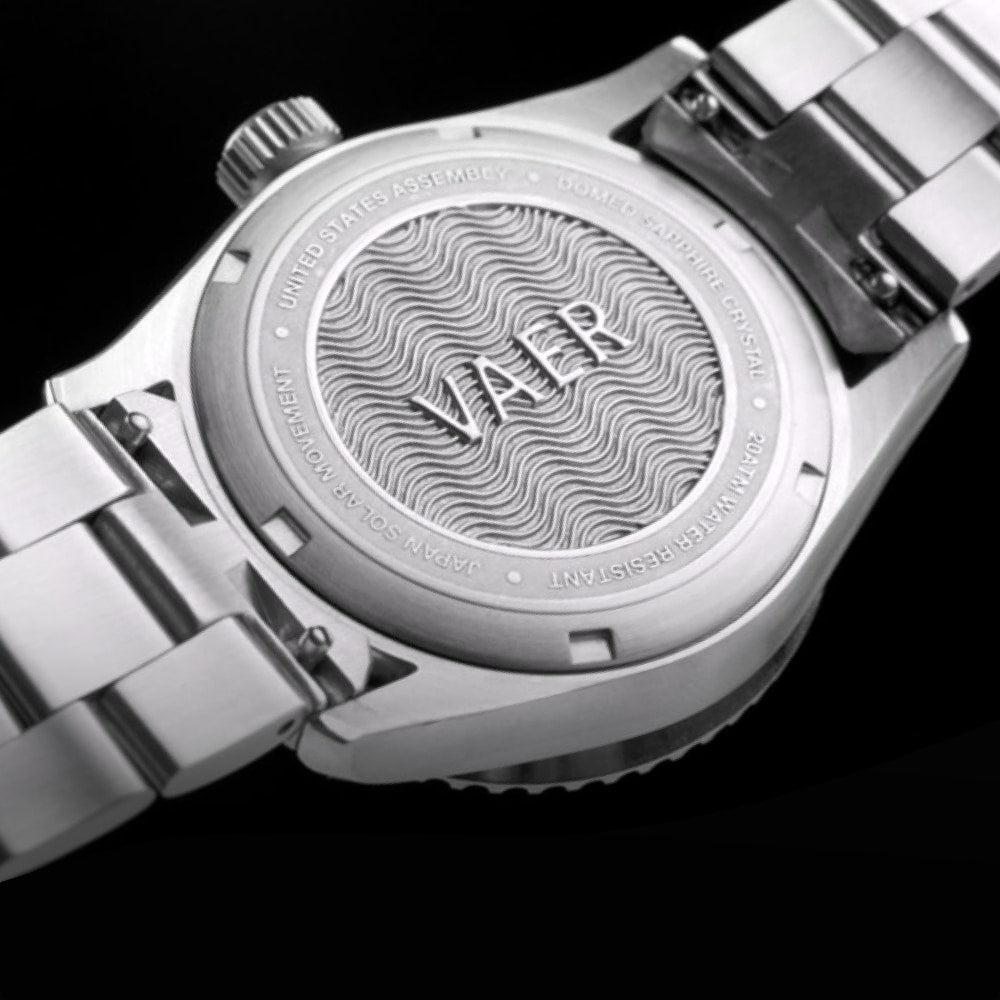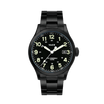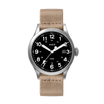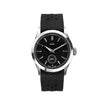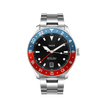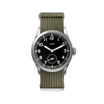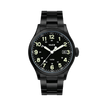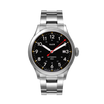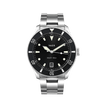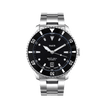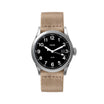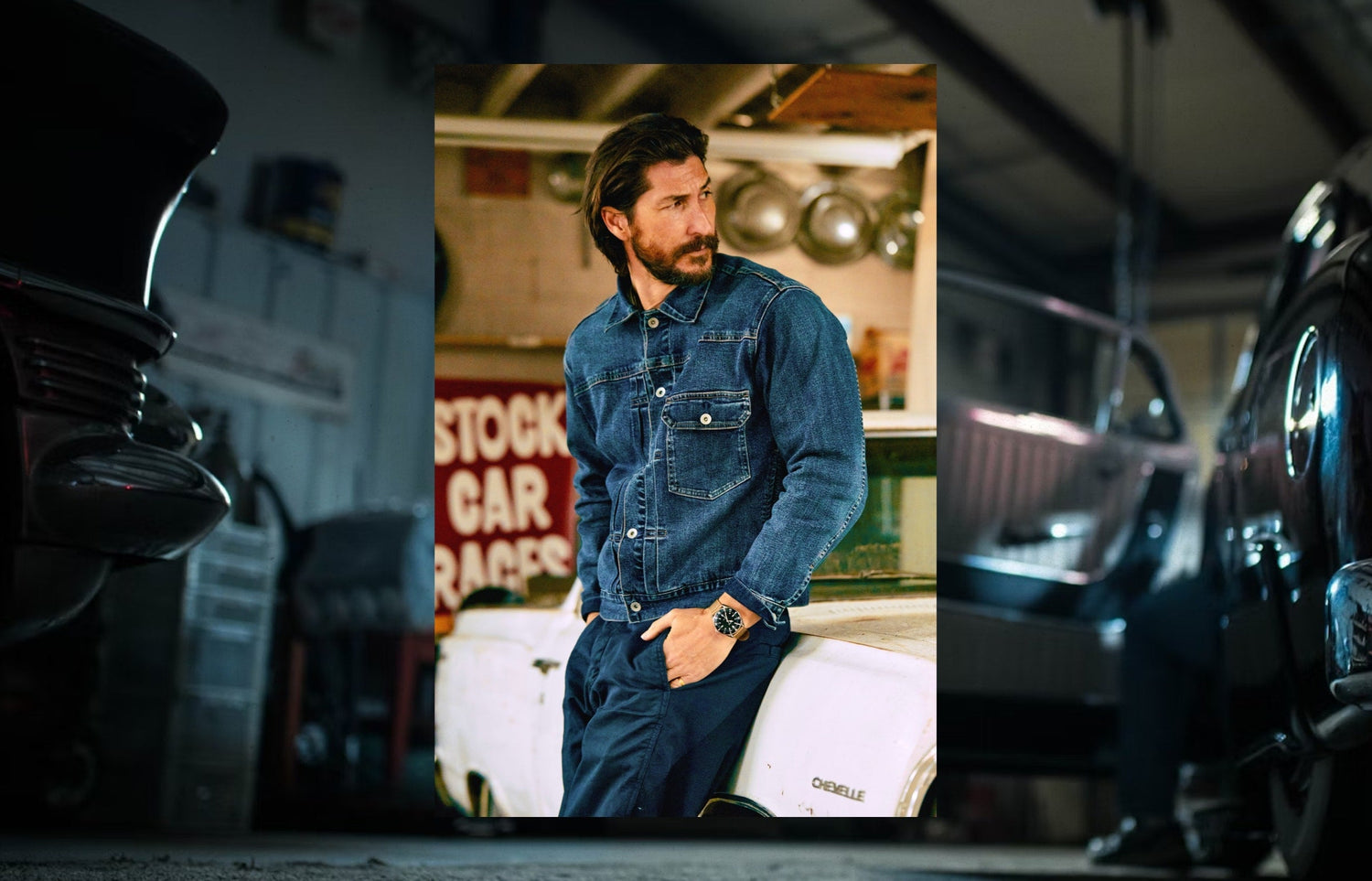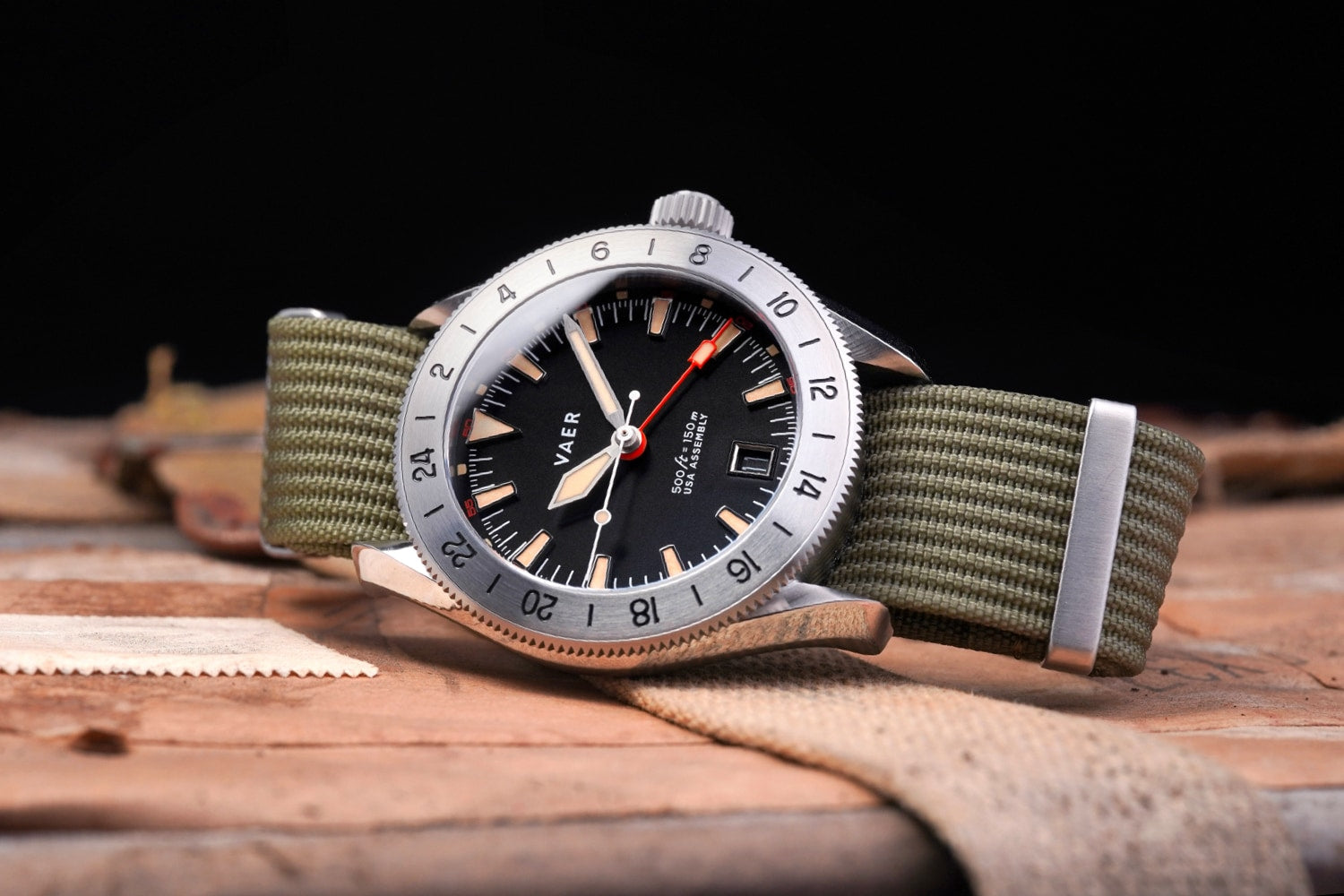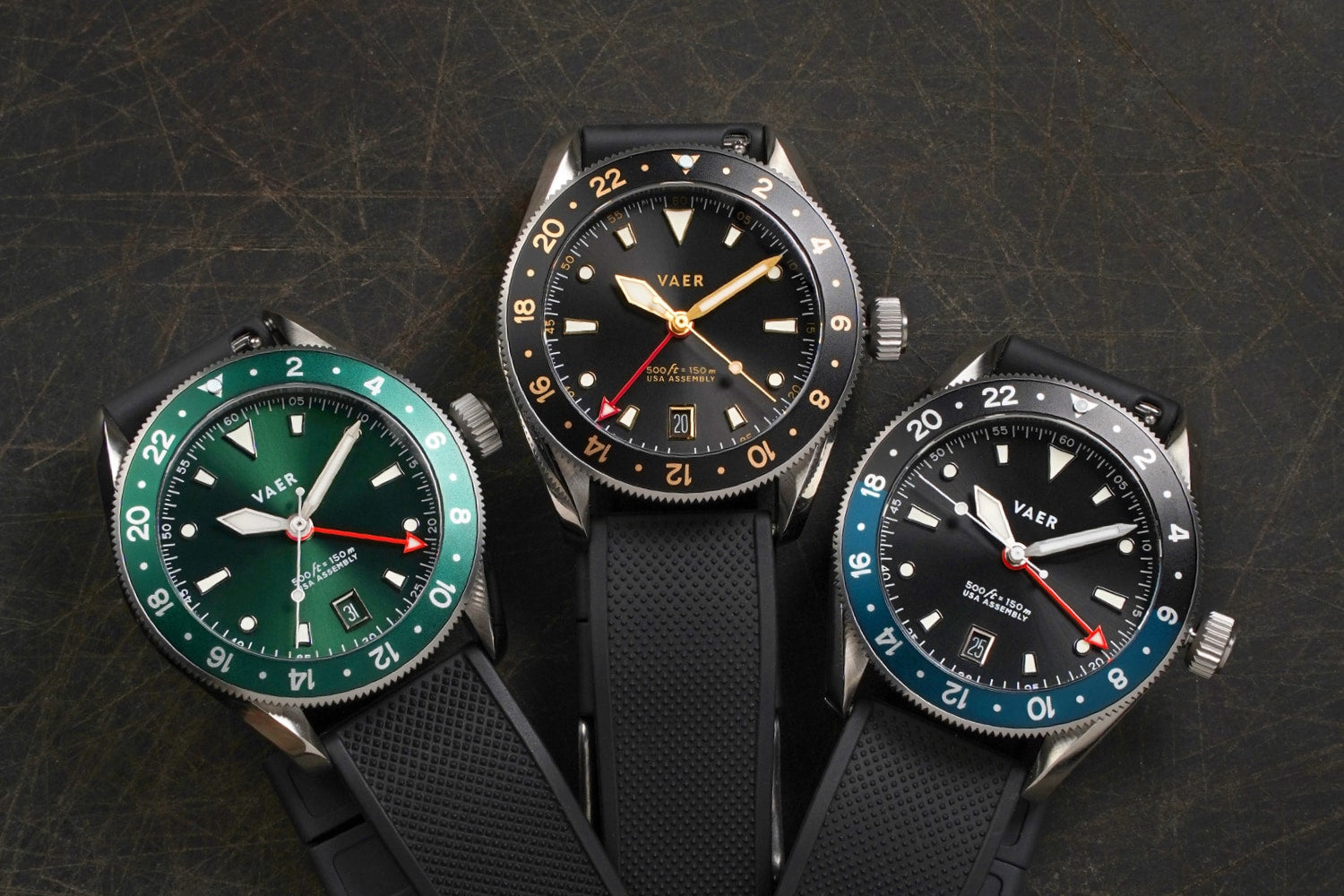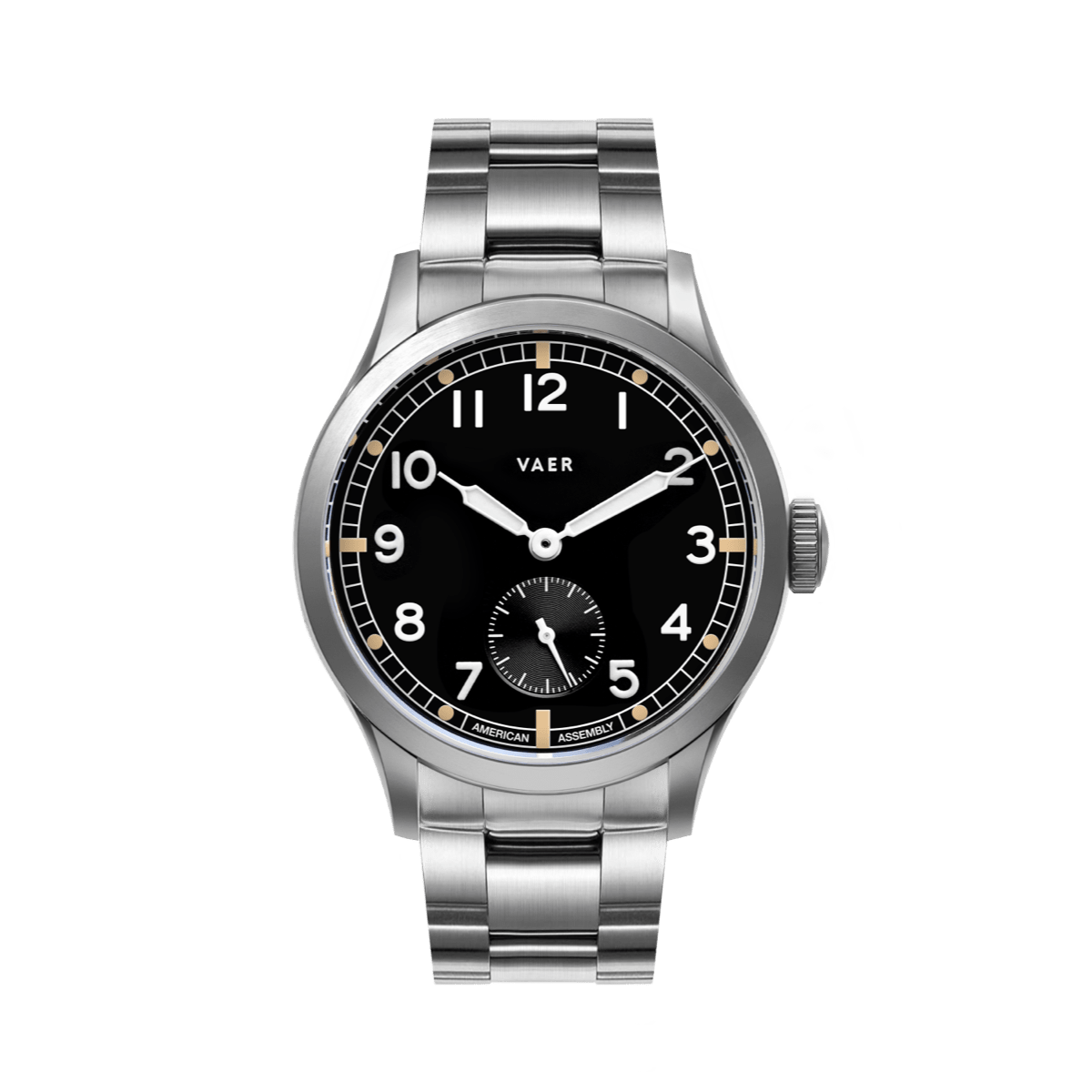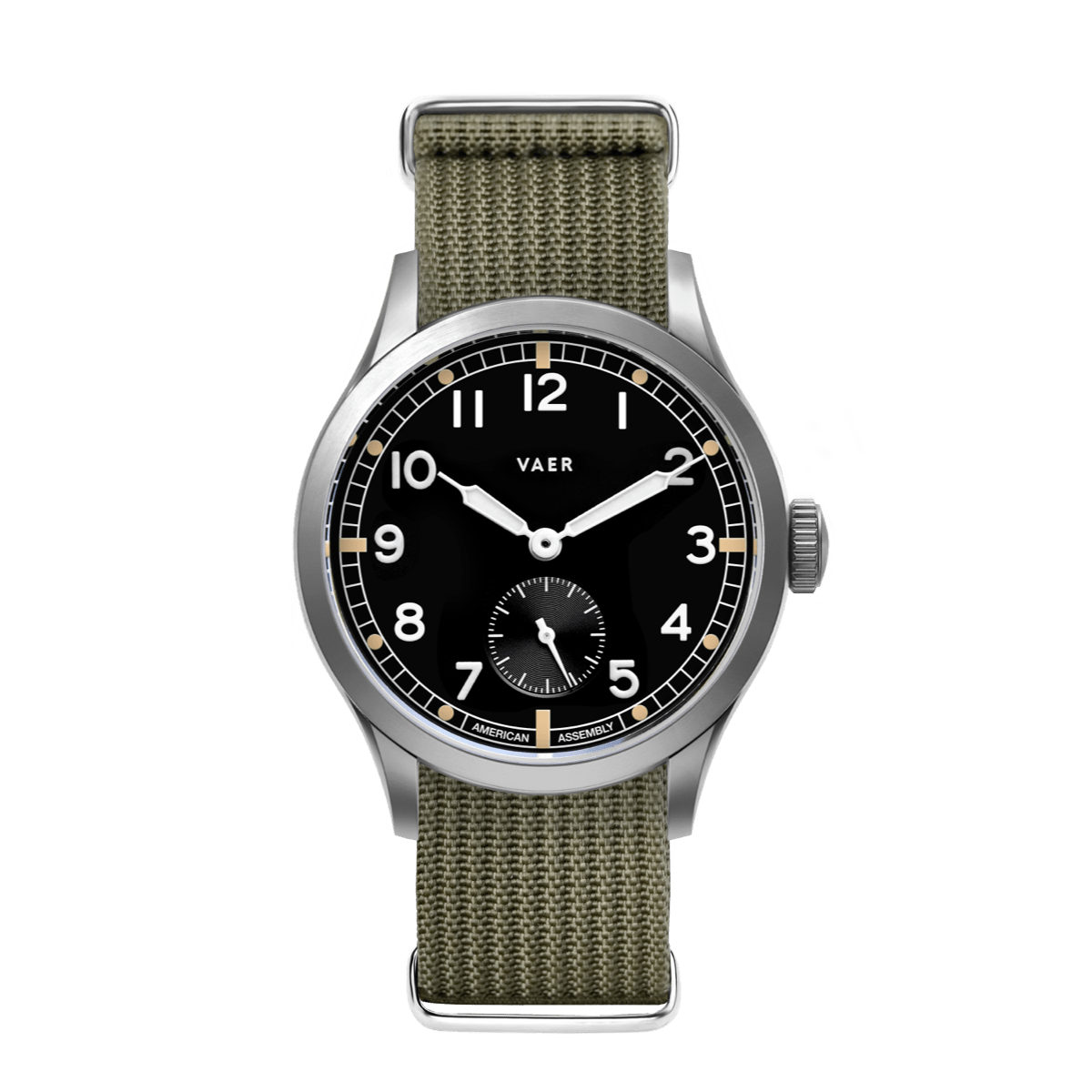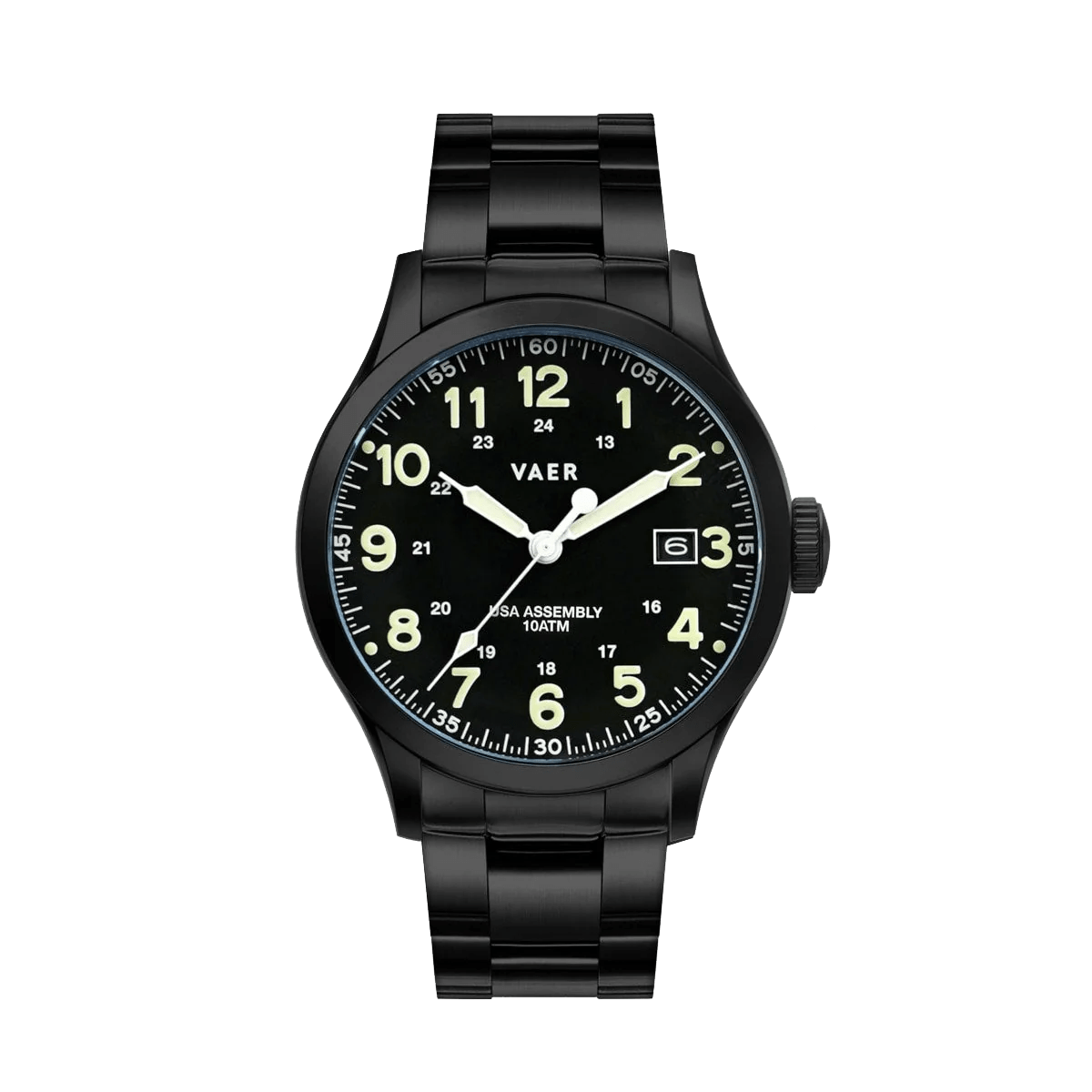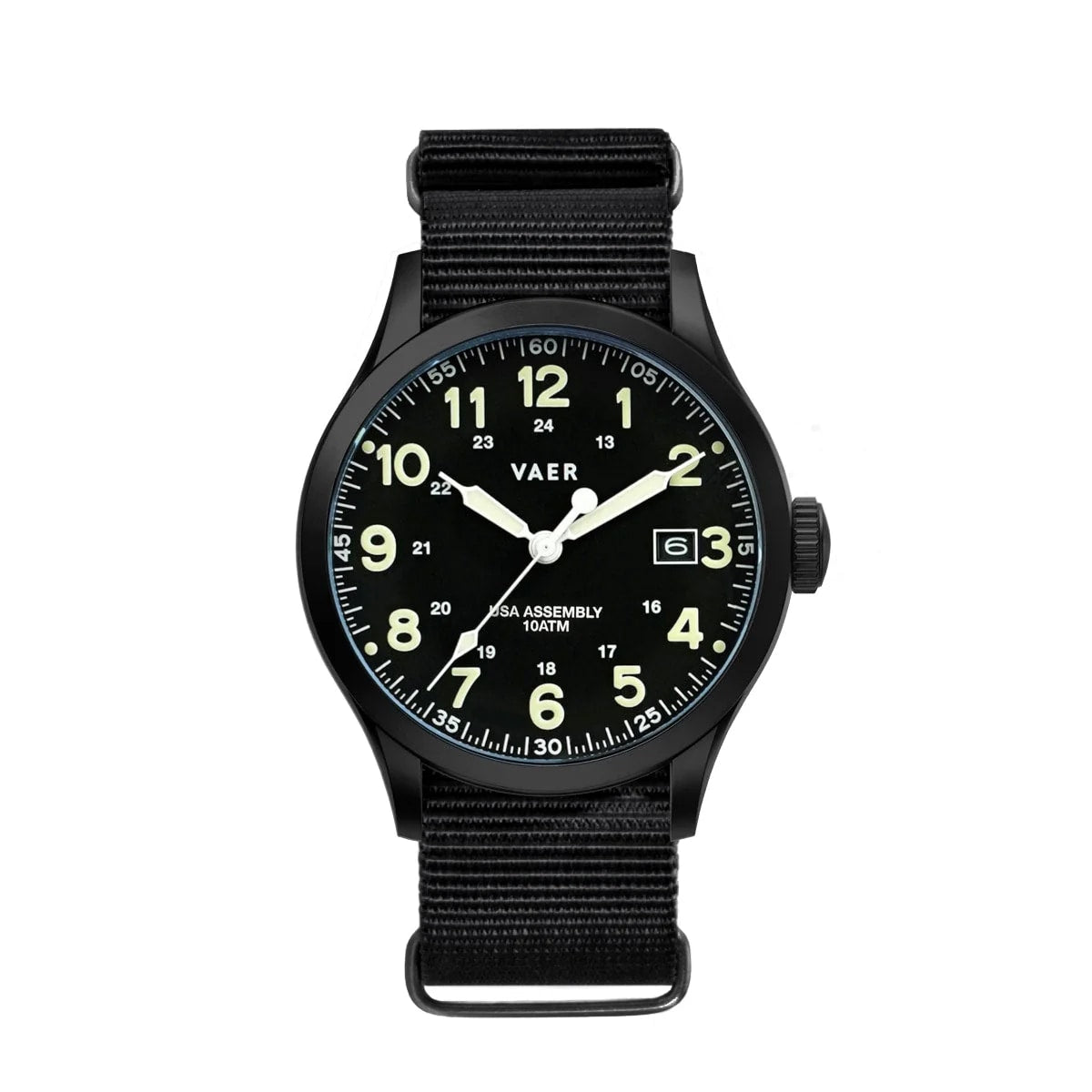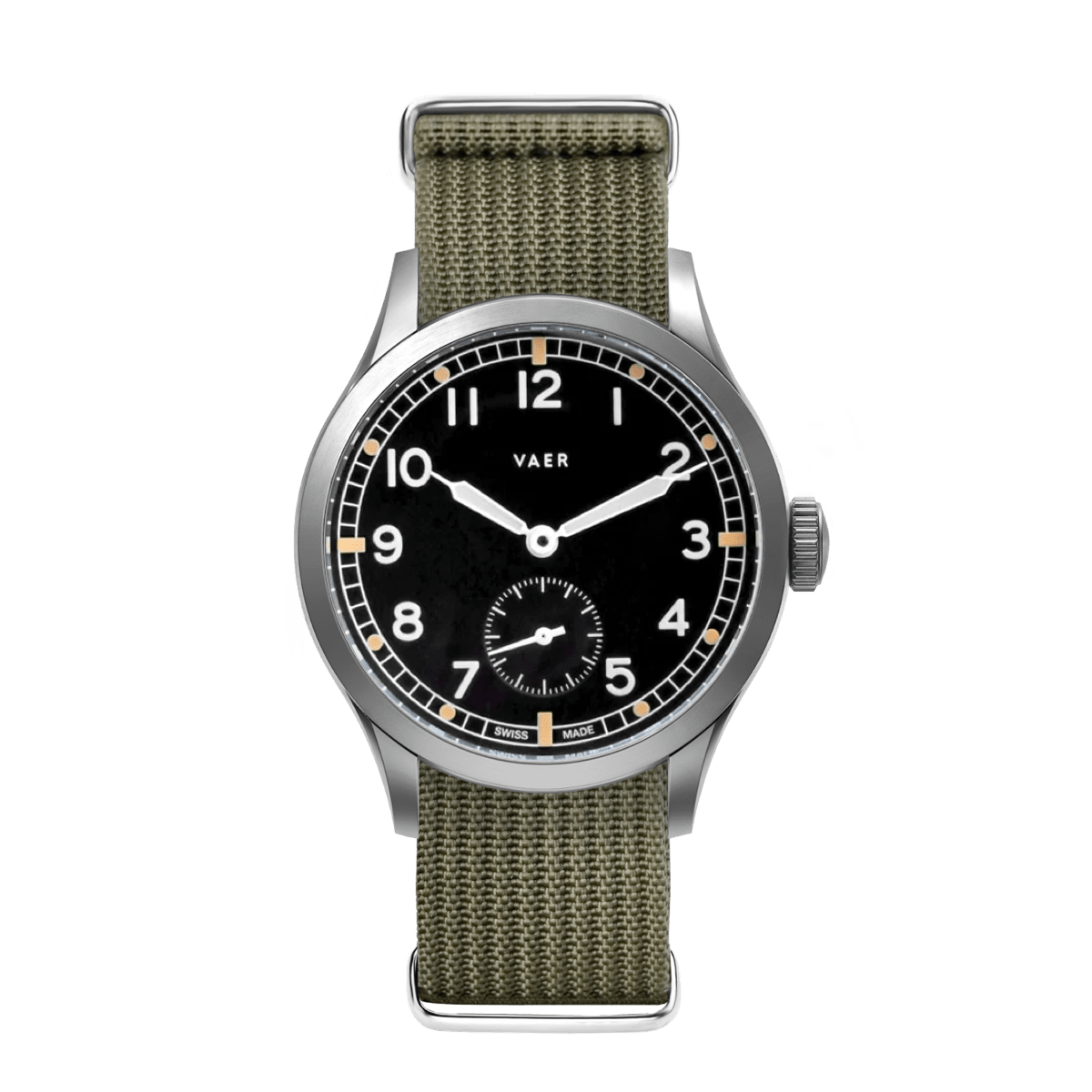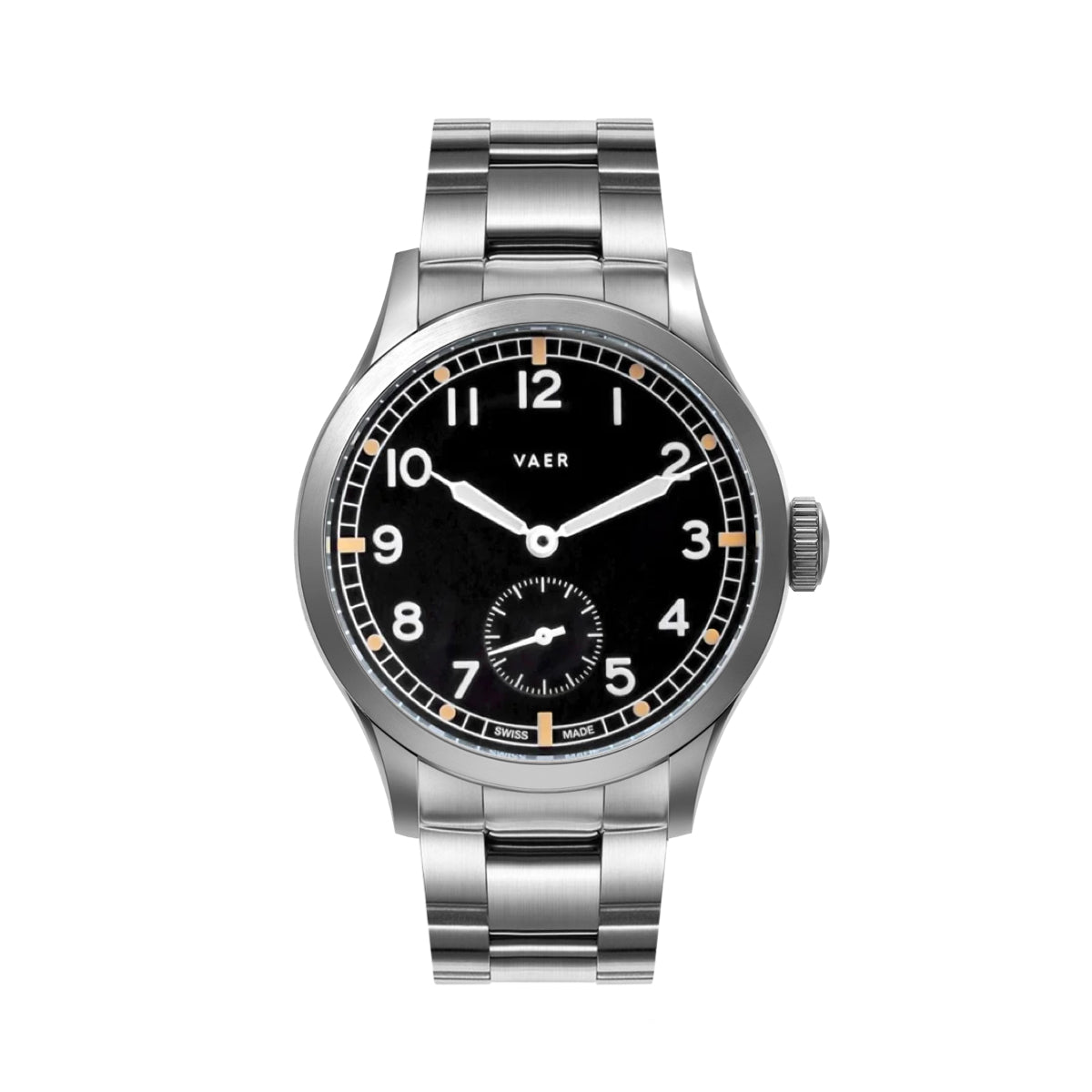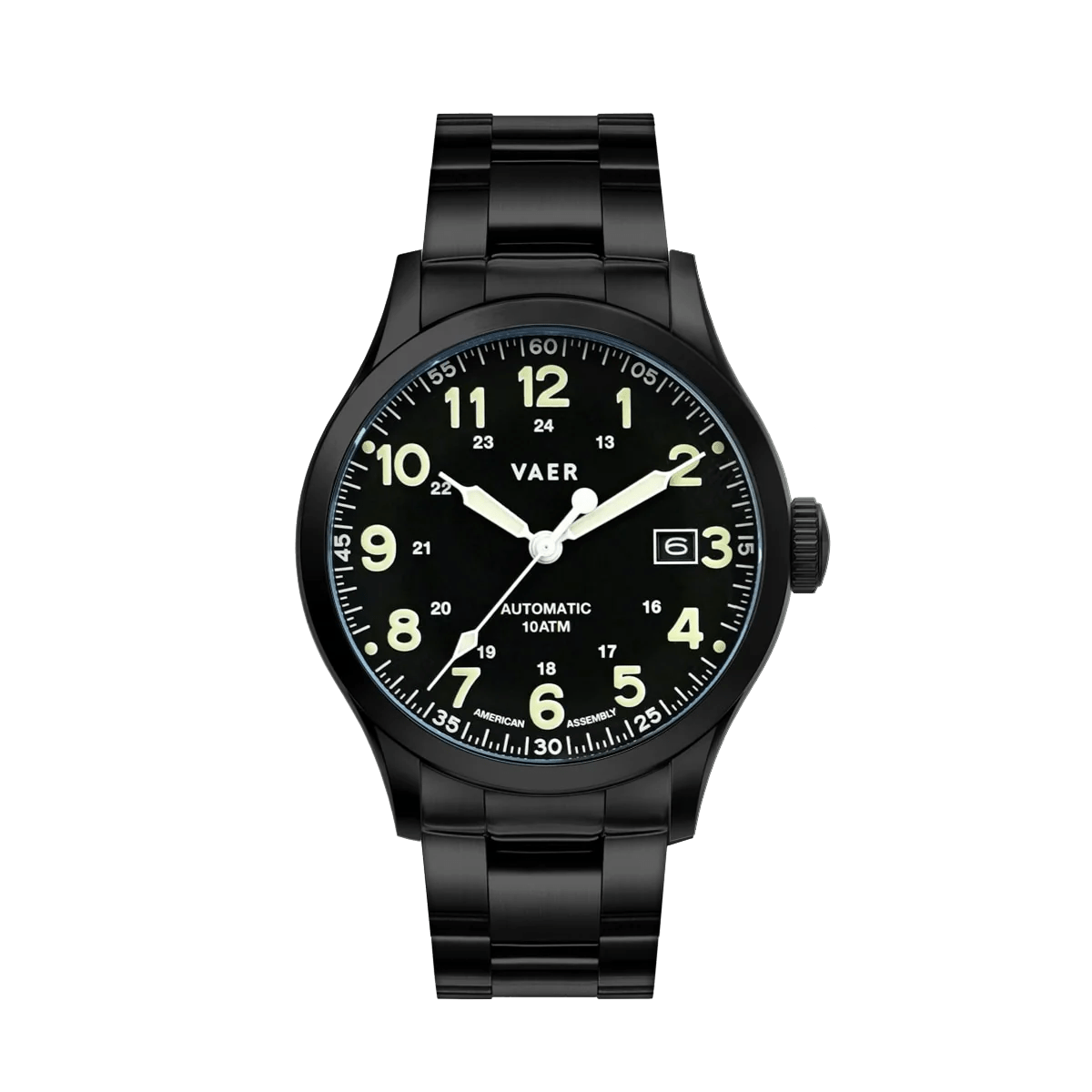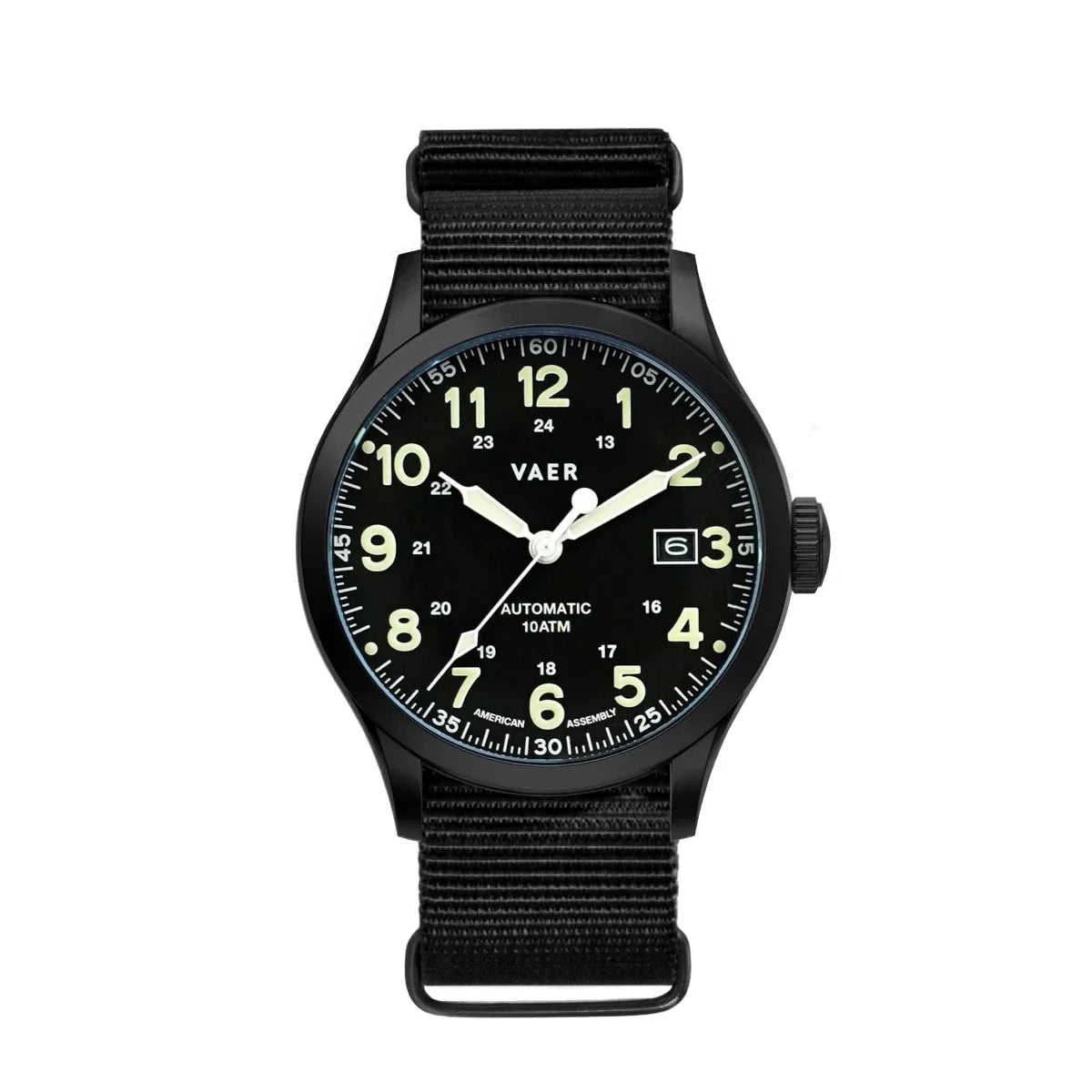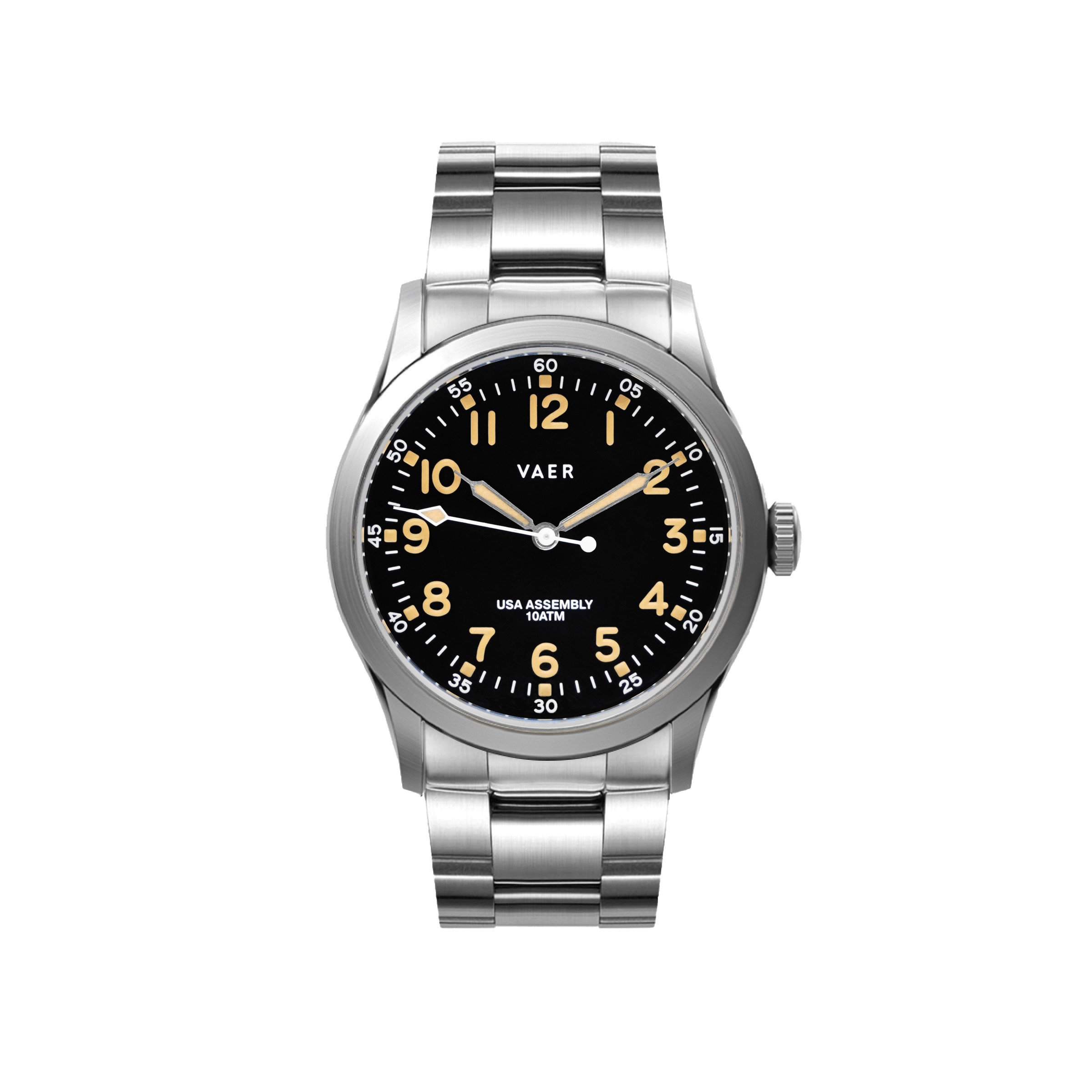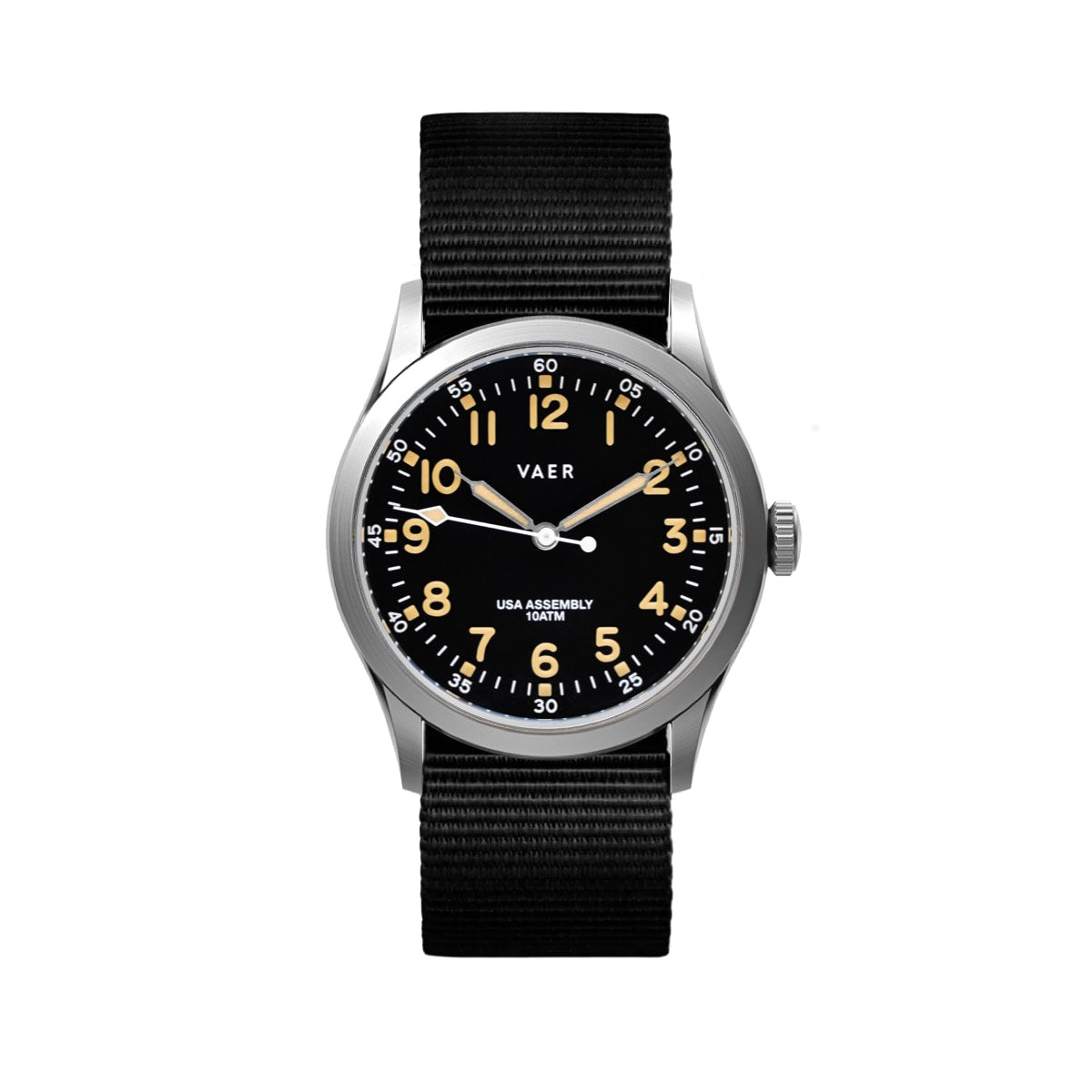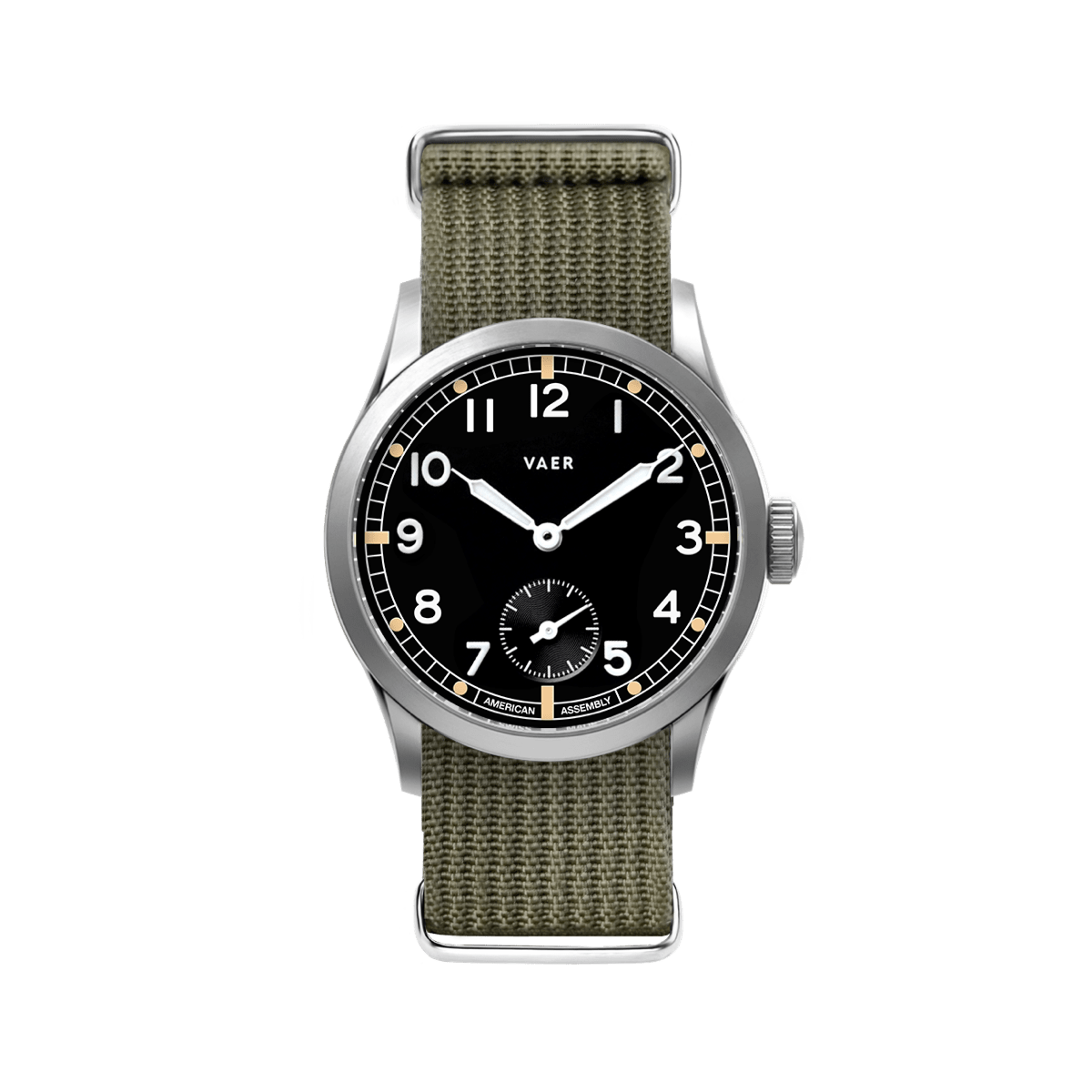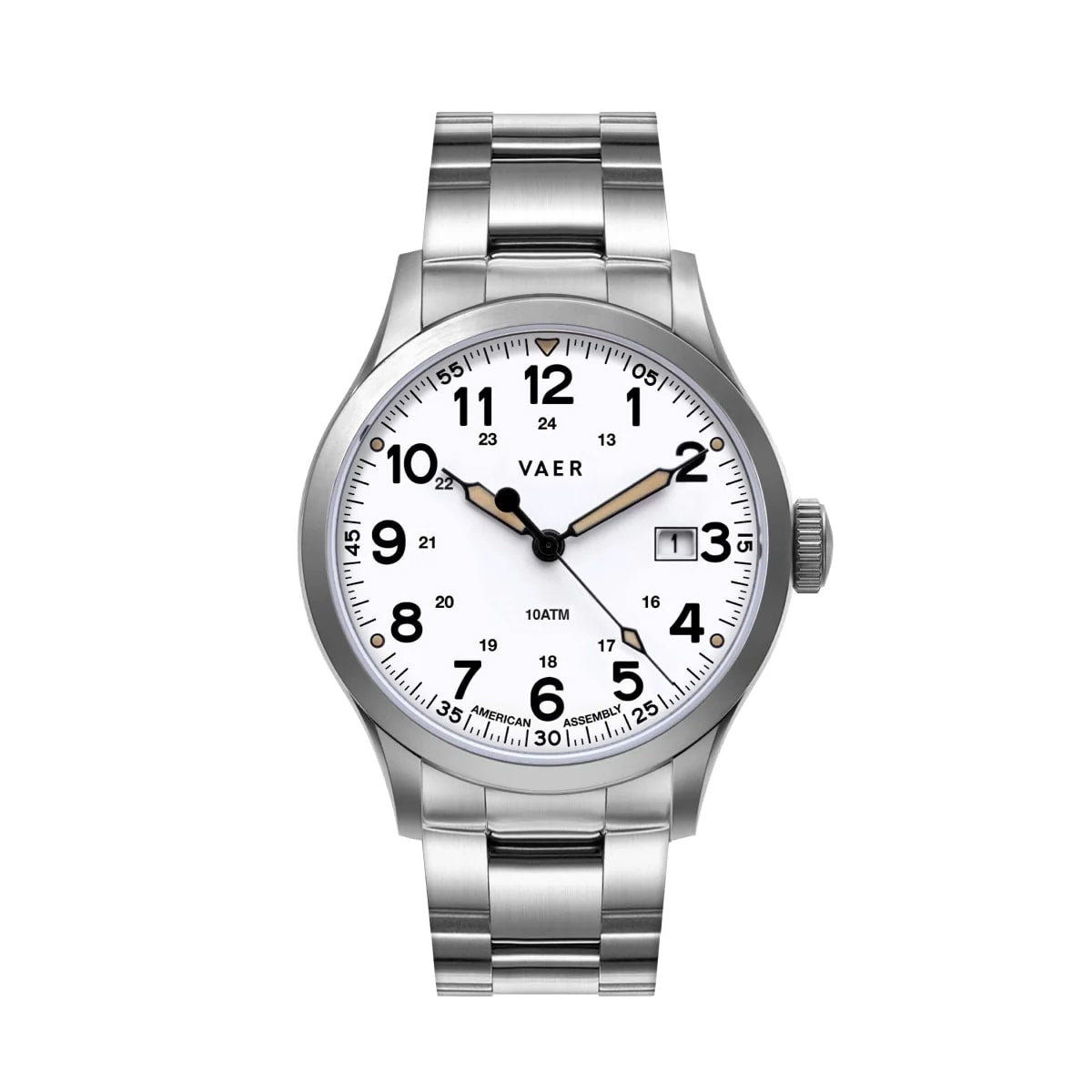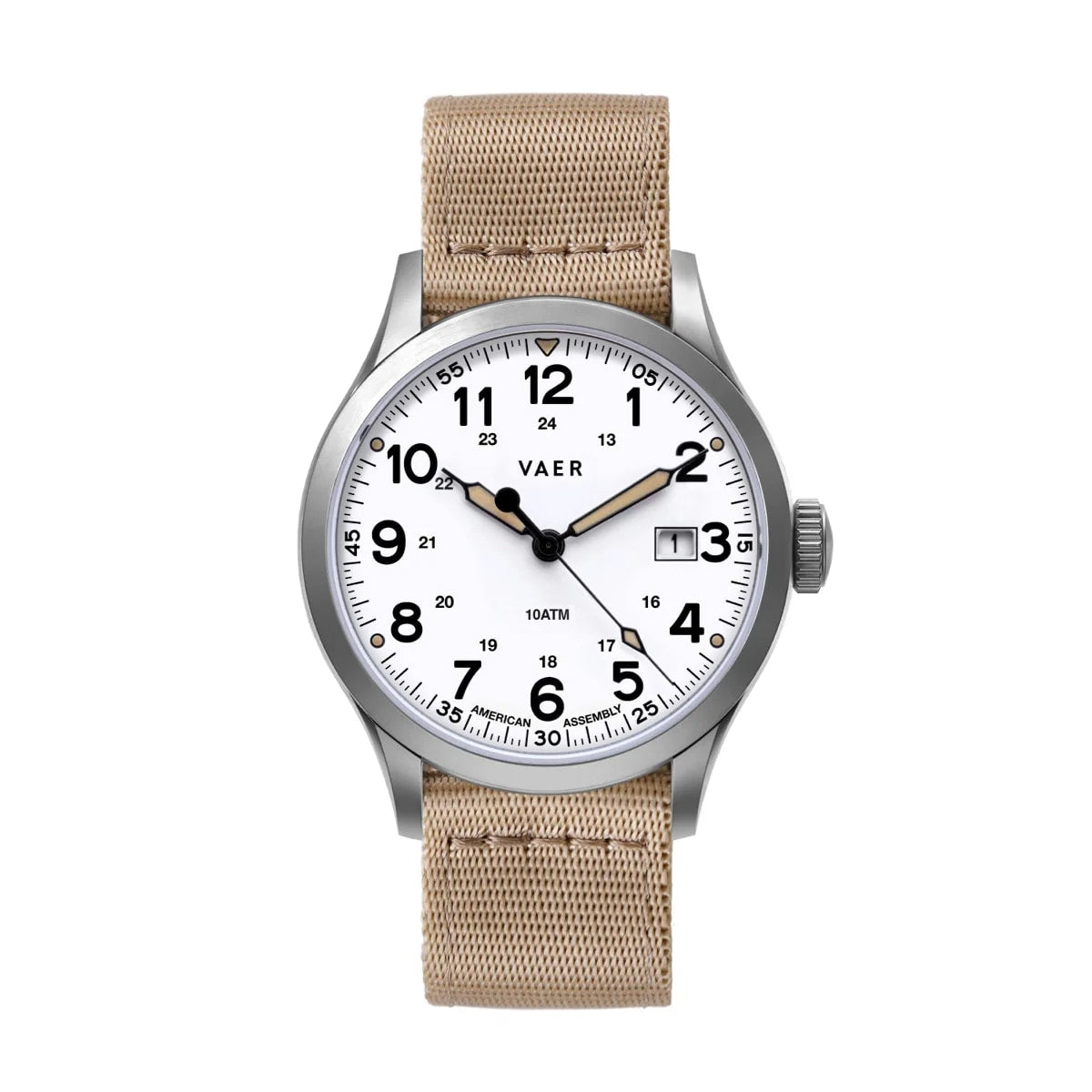There’s an old adage that a man only needs three accessories: a wedding band, a good pair of shoes, and a wristwatch. But that leaves an important question… what type of timepiece should I choose?
A wristwatch is the rare article of clothing that bridges function, sentiment, and personal style. It can be subtle or conspicuous, rugged or refined — but at the end of the day, most tool watches can be sorted into three key categories: the field watch, dive watch, and chronograph.
These three archetypes have endured not just because of their technical merit, but because they carry cultural weight. They were worn by explorers, actors, soldiers, and racers. In other words, men who, whether by fate or design, had style written into their biography.
This guide provides an in-depth breakdown of these iconic watch categories, exploring what they reveal about their wearers and how their dimensions have evolved over time.
The field watch is the backbone of modern watch design — a blueprint of utility. Born in the trenches of the First and Second World Wars, its purpose was clear: legibility, reliability, and resilience under pressure.
Style Statement: Choosing a field watch is a quiet declaration of intent. It says you value function over flash, clarity over clutter. The man who wears a field watch likely dresses the same way — unfussy, well-made basics in earthy tones and natural fabrics.
Harrison Ford, both in real life and on-screen, is a perfect embodiment of this ethos. Whether wearing a beaten leather jacket in Raiders or sporting a vintage military piece during a press junket, his watches never shout. They simply fit. More recently, Pedro Pascal’s Joel in The Last of Us wore a beat-up field watch like armor — part survival tool, part sentimental talisman.


And of course, Robert Redford — the prototype of American restraint — wore variations of this aesthetic throughout his career. A field watch always at home on his wrist, whether in wool flannel or military cotton.
Watch to Wardrobe Tip: Pair a black dial steel field watch with selvage denim, desert boots, and a waxed canvas jacket. Keep the strap utilitarian — NATO, leather, or steel a steel bracelet for a more elevated look.
Dive watches are the mechanical equivalent of a Land Rover: built for extremes, but most often seen in urban environments. They first gained cultural prominence in the 1950s, when the postwar era produced a new kind of masculinity — one marked by athleticism, travel, and leisure.
Style Statement: A dive watch (and its international cousin, the GMT) speaks to aspirational mobility. It suggests that even if you're at the office, you’re dreaming of Tahiti. Steve McQueen famously wore the Rolex Submariner off-screen. More than a prop, it was a tool of identity — rugged, clean, and ready for action.
But while McQueen leaned into the rebel archetype, Redford offered a different angle. In The Electric Horseman(1979), Redford wears a diver in the context of cowboy Americana — a subtle twist. Here, the dive watch isn’t oceanic. It’s landlocked. Paired with denim shirts and battered boots, it signals adventure without geography.


Bond and the Dive Watch: The modern dive watch’s fashion legacy owes a debt to James Bond. In Dr. No (1962), Sean Connery famously wore a Rolex Submariner Ref. 6538, a detail lifted from Ian Fleming’s own preferences. Later iterations — notably those worn by Roger Moore and Daniel Craig — added complexity, gadgetry, and prestige branding (Omega’s Seamaster). But the core idea remained: a dive watch is an all-conditions symbol of capability.
And then there’s the NATO strap. Popularized by Bond in Goldfinger and Thunderball, it became an icon in its own right — a striped nylon workhorse that combined military practicality with British elegance. Today, it remains the easiest way to dress down a diver while dialing up its personality.
Watch to Wardrobe Tip:A diver or GMT with a steel bracelet works across formality levels — from safari jackets and linen shirts to sharp navy suits. For a more rugged look, swap in a rubber or tropic strap, or embrace the Bond-style NATO for daily wear.

The chronograph is a tool of measurement, originally designed for aviation, driving, and sports. However, in the postwar period, it evolved into something entirely different: a statement piece.
Style Statement: The man who wears a chronograph is often, consciously or not, making a nod to the golden age of masculine glamour — racing, cinema, high-speed risk. Paul Newman’s Rolex Daytona remains the most famous example. It wasn’t just the watch. It was Newman’s charisma: tailored suits, tortoiseshell shades, and a kind of democratic elegance.


Steve McQueen’s square-cased Heuer Monaco in Le Mans added another layer of motor oil and adrenaline, while retaining the cool of the pit lane. Fast forward to Tarantino’s Once Upon a Time in Hollywood, and you find Brad Pitt’s Cliff Booth wearing a gold-cased Citizen chronograph with the kind of swagger only a stuntman can pull off. The chronograph in that context isn’t flashy. It’s earned. It says, I know what I’m doing, and I don’t need to explain it.
Watch to Wardrobe Tip: The chronograph adds complexity to your wrist — so keep the rest of the outfit simple. Whether worn with a suede bomber or a gray flannel suit, the goal is contrast. Chronographs also pair beautifully with rings, bracelets, vintage sunglasses, or anything that channels mid-century motorsport.
Watch Case Sizes Over Time
Watch sizing isn’t just about wrist comfort — it’s a reflection of era-specific values. The compact restraint of the 1950s, the flamboyant experimentation of the '70s, the oversized maximalism of the 2000s — each tells us something about the moment they came from.
|
Decade |
Popular Sizes |
Style Characteristics |
|
1950s |
32–34mm |
Postwar dress sensibilities dominate. Most men wore slim, gold-plated timepieces with domed acrylic and mechanical handwind movements. Even sport watches, like the early Blancpain Fifty Fathoms, stayed compact. |
|
1960s |
34–38mm |
Tool watches rise. Field and dive designs enter the mainstream. Sean Connery's Rolex Submariner Ref. 6538 in Dr. No measured 38mm — considered large at the time, though modest by today’s standards. |
|
1970s |
36–38mm |
The Quartz Crisis inspires design innovation: cushion cases, bullheads, and integrated bracelets. Watches get wider or more angular, though diameters stay relatively tame. |
|
1980s |
38–40mm |
Tool functionality rises, especially in digital and quartz models. Mechanical chronographs return quietly. The decade favors durable steel sports watches with a subdued presence. |
|
1990s |
40–42mm |
The luxury-sport hybrid takes over. Omega’s Seamaster 300M (Bond era) lands at 41mm, helping normalize larger diameters in everyday wear. |
|
2010s |
42–45mm+ |
Peak of the oversized trend. Panerai, Breitling, and IWC promote heavy, military-inspired cases. 44mm becomes the aspirational standard in sport watches. |
|
2020s |
36–40mm (return to roots) |
The pendulum swings back. Vintage-inspired sizing and comfort become premium selling points. Most brands now center their core lines around 38–40mm as the sweet spot for versatility. |
Watch Case Sizing Guide
Under 36mm: Works best for formalwear or a retro look. Ideal for slim wrists or vintage purists.
38–40mm: Arguably the most versatile range. Historically accurate for mid-century designs, and modern enough to look intentional.
38–40mm: The new normal — comfortable, proportional, and masculine without excess.
40mm+ : Still relevant for sport and dive watches, but benefits from a strap or bracelet that balances bulk. Choose this range when presence is part of the appeal.
Final Thoughts
A good watch doesn’t just tell time — it communicates who you are. It speaks to your priorities, your sense of proportion, your appetite for risk or restraint. Whether you gravitate toward the rugged utility of a field watch, the elemental confidence of a diver, or the instrument-like complexity of a chronograph, the choice is never neutral. It’s expressive.
The great style icons understood this. Connery’s Bond didn’t just wear a Submariner — he made it cinematic. Redford’s quiet confidence found its match in simple, utilitarian pieces that never asked for attention. Newman and McQueen turned racing chronographs into emblems of poise under pressure. And today, men like Pedro Pascal and Brad Pitt carry that lineage forward, showing that watches, when chosen well, become part of the character — not costume.
As watch sizes and styles evolve, the core principle remains: wear with intention. Choose pieces that match your life, your wardrobe, your wrist. Don’t chase trends. Chase coherence.
The right watch doesn’t compete with your outfit — it completes it.


